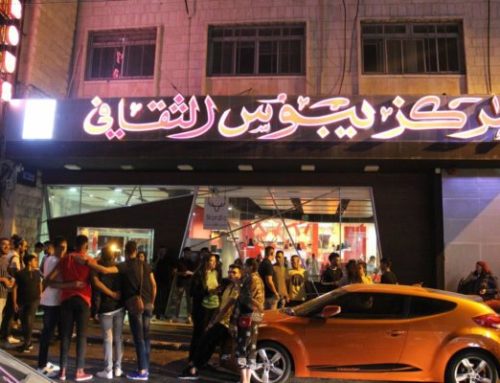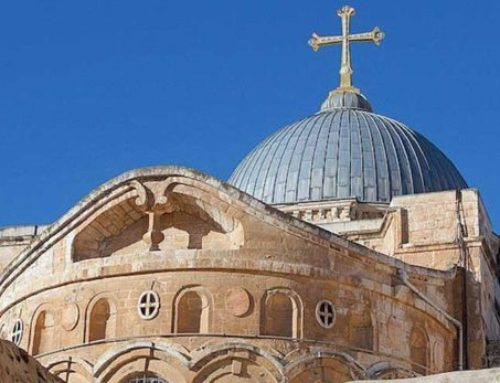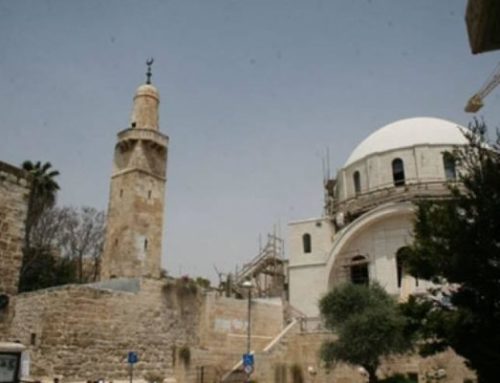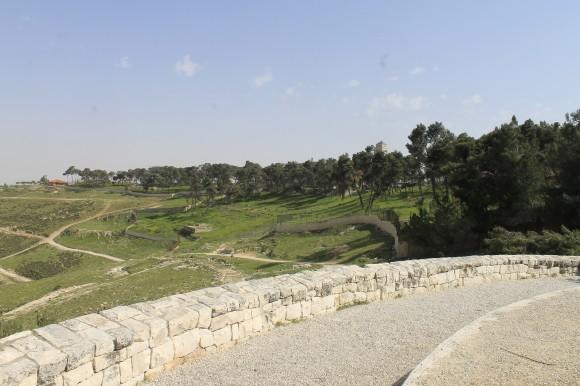
Mount Olive in Jerusalem has many breathtaking views. Most of which oversee the Old City of Jerusalem within the walls and parts of the city located outside the wall.[1]
The Eastern Overlook of the mountain that views Al-Aqsa mosque became a focus of attention for Jerusalemites and tourists and visitors of the city; as from there the land of Jerusalem, its topographic formation and its architecture can be clearly seen and observed.[2] Other surrounding scenes can also be seen from the overlook, such as the valley of Qadron, the neighborhoods of Silwan, and the valley of Al-Jouz.[3]

The Eastern Overlook on a height of 826 meters above the sea level[4] oversees the Asian-African pitfall known as the Great Groove. While it connects between two foothills; that of Al-Tour and that of Al-Masharef, any Jerusalemite towns can be seen from there; such as Issawiya and Ezzariya.[5]
The overlook on the other hand exposes the colonization activities of the Israeli occupation. It shows settlement activities and the apartheid wall. Many settlements can be seen from the overlook such as Ma’ali Adomim, one of the biggest settlements around Jerusalem.[6]
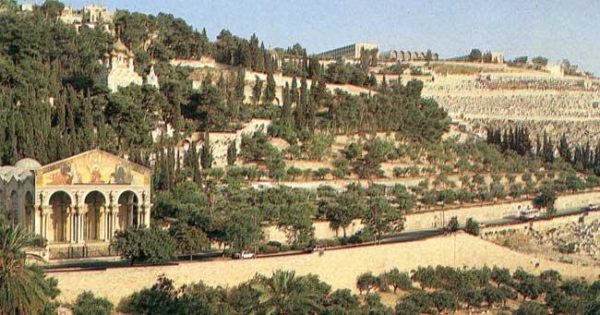
There is a difference between the vegetation on the Western and the Eastern sides of the mountain due to different rain rate. The Western side receives more annual rain rates hence it is covered with olive trees, while the Eastern side receives less rain and is covered with desert flora.[7]
When clear, the overlook grants its visitors a beautiful view of Amman-Jordan and the Salt mountains. It also grants them an opportunity to watch the sunrise over the holy city.[8]
[1] “The Mount of Olives,” http://www.enjoyjerusalem.com/explore/paths-and-trails/path/280
[2] Ibid
[3] “Beautiful Sceneries from Mount of Olive,” last modified August 10, 2018, http://www.panet.co.il/article/1632701
[4] Ibid
[5] “The Mount of Olives,” http://www.enjoyjerusalem.com/explore/paths-and-trails/path/280
[6] Ibid
[7] Ibid
[8] Ibid



